As a seasoned fitness expert, I have helped numerous clients enhance their upper back appearance, strength, and overall health.
The exercises I’m sharing in this article are the ones that proved to be the best for sculpting a robust and resilient upper back for my clients. They have been tried, tested, and refined into a highly effective and accessible routine.
In addition to exercising, one of the best ways to build upper back strength and muscle is through proper supplementation. I always recommend a high-quality pre-workout before hitting the weights.
So, without further ado, let me help you on the path to a healthier and more athletic upper back.
Quick Summary
- The best upper back exercises include pull-ups, wide-grip bent-over rows, shrugs, seal rows, hang cleans, reverse flys, I-Y-T, close-grip rows, landmine rows, and face pulls.
- Upper back workouts target the trapezius, rhomboids, latissimus dorsi, rear delts, and levator scapulae.
- According to a study from The Journal of Physiology, time under tension when performing reps can increase muscle growth.
- To make the most out of an upper back workout, I suggest warming up adequately and stretching before each session, adding isolation exercises, and focusing on the mind-muscle connection.
Top 11 Exercises For Upper Back Muscles
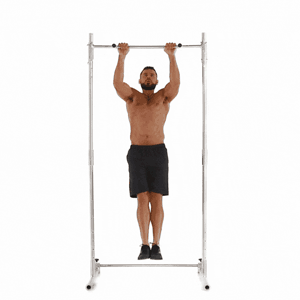
I have compiled the 11 best upper back exercises after conducting extensive research and analyzing their effectiveness in developing strength, ability to target multiple muscles, and promoting overall functional fitness.
“The goal of back strengthening exercise is to condition the muscles to better support the spine and withstand stress, which can lead to back and neck pain relief.”
- Dr. Jonas Gopez, MD
1. Pull-ups
Pull-ups are classic upper back exercises that work the rhomboids and rear delts. They improve upper body stability, increase muscle activation, and enhance posture.
Here’s how you perform them:
- Grasp the pull-up bar with an overhand grip, slightly wider than shoulder-width apart.
- Hang from the bar with your arms fully extended.
- Pull your body up towards the bar, leading with your chin, until it reaches the level of the bar.
- Lower your body back to the starting position in a controlled manner.
 2. Wide-grip Barbell Bent-over Rows
2. Wide-grip Barbell Bent-over Rows
The wide-grip barbell row is a power move for your upper back that focuses on your lats, rhomboids, and posterior delts. This exercise is necessary to build a more muscular, toned upper back.
Here’s how you perform them:
- Stand with a barbell, gripping it with a wide, overhand hold.
- Hinge at the hips, bend your knees, and let your torso dip towards the floor, keeping your back straight.
- Brace your core and lift the barbell towards your chest, keeping your arms straight.
- At the movement's peak, pause for a moment to feel the burn.
- Exhale and lower the barbell to the starting position.
3. Shrugs
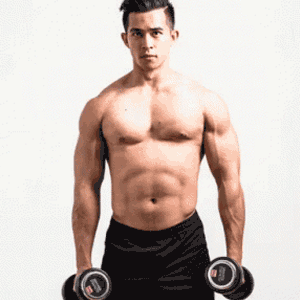
Shrugs are an isolation exercise that targets the upper traps, the muscle located at the top of your shoulders. They also relieve neck and shoulder tension.
You can use heavier weights or incorporate hold and squeeze techniques to make the exercise more challenging.
Here’s how you perform them:
- Stand with your feet shoulder-width apart, holding dumbbells at arm's length in front of your thighs.
- Keeping your arms straight, raise your shoulders towards your ears.
- Pause at the top of the movement, then slowly lower your shoulders back.
 4. Seal Row
4. Seal Row
The seal row is performed by using a resistance band and mimicking the movement of a rowing stroke.
I recommend them to clients who want to improve posture and strengthen the muscles responsible for maintaining a good, upright stance.
Here’s how you perform them:
- Anchor a resistance band to a sturdy object, and grab each end of the band with your hands.
- Begin with your arms extended, keeping tension on the band.
- Bend your elbows, pulling the band towards your hips, squeezing your shoulder blades together.
- Return to the original position and repeat for desired reps.
5. Hang Cleans
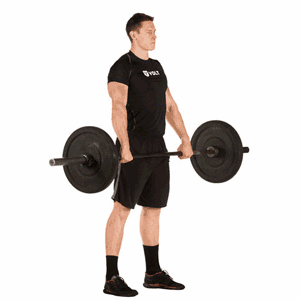
Hang cleans challenge middle back muscles, shoulders, legs, deep abdominal muscles, and hips.
By incorporating quick and powerful movements, they build strength and power and improve coordination in a dynamic full-body exercise.
Here’s how you perform them:
- Stand with feet hip-width apart, and hold the barbell in front of your thighs.
- Dip your knees slightly, and quickly extend your hips and knees while pulling the bar towards your chest forward.
- Catch the bar at your chest with your elbows pointing out to the sides.
- Stand up straight.
- Lower the bar back down to your thighs and repeat for desired reps.
 6. Reverse Flys
6. Reverse Flys
The reverse fly is a strong upper back exercise that works your shoulders, posterior deltoids, rhomboids, and rotator cuff muscles.
It helps to improve posture, increase upper body strength, and sculpt a toned upper back.
Here’s how you perform them:
- Hold a pair of dumbbells with your palms facing each other.
- Keep your arms straight, hinge forward from the hips, and keep your back flat.
- From the hinged position, raise the dumbbells to the sides, keeping a slight bend in the elbows.
- Squeeze your shoulder blades together at the top of the movement.
- Lower the dumbbells back down.
7. Single-arm Dumbbell Rows
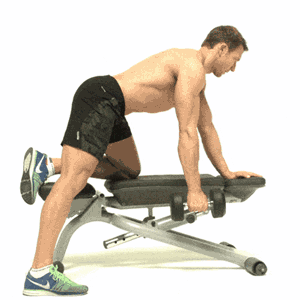
Single-arm dumbbell rows are a potent exercise for toning the lats, rhomboids, and middle traps.
The rows fix poor posture and define and stabilize the upper body.
Here’s how you perform them:
- Position yourself with one hand and knee on the bench and the other foot on the floor.
- Hold a dumbbell in one hand, with the palm facing your body.
- Hinge forward from the hips, keeping your back straight.
- Row the dumbbell toward your ribcage.
- Squeeze your scapula, and lower the dumbbell to the starting position.
 8. I-Y-T
8. I-Y-T
The I-Y-T exercise targets the scapular muscles, including the traps, rhomboids, and serratus anterior.
It promotes scapular stability and improves posture by strengthening the muscles that support the scapula.
Here’s how you perform them:
- Start by standing with your feet hip-width apart.
- Reach overhead with both arms and form the letter "I".
- Keeping the arms in a straight line, lower your arms to form the letter "Y".
- Next, bring your arms back to your sides, forming the letter "T".
9. Close-Grip Seated Cable Rows
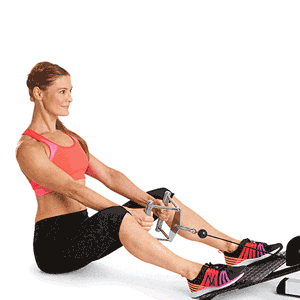
The close-grip seated cable row is a powerhouse exercise that challenges the muscles to work in unison, resulting in a more defined appearance.
The close-grip variation emphasizes the middle and lower traps and the rhomboids by utilizing a narrow grip.
Here’s how you perform them:
- Sit on a bench in front of a cable machine.
- Grasp the cable handle with a narrow grip, keeping your palms facing each other.
- Pull the cable towards your chest with a straight back, leading with your elbows.
- At the end of the movement, pause and squeeze your scapula.
- Slowly release the cable back to the starting position.
 10. Single Arm Landmine Row
10. Single Arm Landmine Row
The single-arm landmine row exercise takes your upper back training to the next level.
With a greater range of motion than traditional barbell rows, it adds variety to your back workout.
It's a full-body exercise performed standing up, engaging your core and legs.
Here’s how you perform them:
- Stand facing a barbell secured in a landmine.
- Grasp the barbell with a wide, overhand grip.
- Bend forward from the hips, lowering your torso until it's parallel to the floor.
- Pull the barbell towards your torso, keeping your elbows close to your body.
- At the end of the movement, pause and squeeze your shoulder blades.
- Slowly release the barbell back to the starting position.
11. Face Pulls
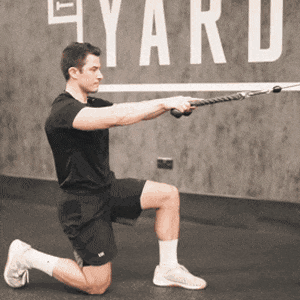
Face pulls target your traps and rhomboids, giving you that coveted V-taper look.
Not only does it improve your posture and decrease your risk of injury, but it will also make you feel stronger and more confident when doing other exercises.
Here’s how you perform them:
- Start by adjusting the cable machine to about face height.
- Attach a rope attachment to the cable machine.
- Grasp the rope with both hands and step back to create tension in the cable.
- Pull the rope towards your face while keeping your elbows high and out to the sides.
- Hold for a brief moment and then release the rope back to its original position.
What Are the Major Muscles in the Upper Back?

The major muscle groups in the upper back are the levator scapulae, trapezius (traps), rhomboids, rear deltoids (delts), and latissimus dorsi (lats).
Understanding these muscles and how they function can help you make the most of your training.
So, we're going to take a quick peek at each of them:
- Levator scapulae: Levator scapulae connects the neck to the shoulder blades, raises the shoulder blade, and extends/rotates the neck for upper back stability.
- Trapezius: The trapezius extends from the skull's base to the lower thoracic vertebrae and shoulder blades. It helps in shoulder elevation, rotation, upper back extension, and neck stability.
- Rhomboids: The rhomboids, found between the scapula and the spinal column, stabilize the shoulders, and pull the shoulder blades towards the spine.
- Rear deltoids: Rear delts are strong upper back muscles that aid in shoulder stability and balance, prevent injury, and improve posture.
- Latissimus dorsi: The lats are triangular back muscles that aid shoulder adduction and extension, crucial for pushing and pulling movements.
Key Training Principles

Training your upper back muscles efficiently demands a specific framework.
Here are four training principles I've found that help you get the most out of your upper back exercises.
1. No Substitute for the Pull-up
The pull-up is considered the king of upper back exercises and for a good reason.
According to the Strength and Conditioning Journal, this compound exercise works multiple muscles, including the lats, rhomboids, and posterior deltoids, making it highly efficient [1].
If you're new to pull-ups, start with an assisted pull-up machine or band-assisted pull-ups, and gradually work your way up to unassisted reps.
2. Pull Exercises Are King
Introducing various pulling exercises into your workout routine is crucial for targeting all the different upper back muscles.
This includes exercises such as rows, pull-downs, and lat pull-overs, which activate upper back muscles to varying degrees [2].
Mix up your equipment, such as cables, resistance bands, dumbbells, and barbells, to add variety.
3. Mind-muscle Connection
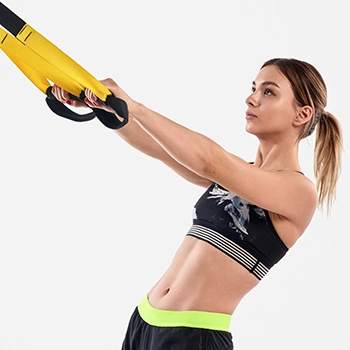
To effectively build the upper back muscles, focusing on the mind-muscle connection is essential.
This means concentrating on engaging the muscles you're working on rather than just going through the motions.
Take a moment before each exercise to visualize the movement and focus on contracting the target muscle group.
4. Slow or Paused Reps
Incorporating slowed or paused repetitions into your upper back exercises can help to increase time under tension, which, according to The Journal of Physiology, causes greater muscle activation and growth [3].
Slow down the movement or pause briefly at the contraction point of each repetition, especially during rows and pull-down exercises.
Prevent Injuries When Exercising

Following some fundamental principles when exercising can prevent injuries.
Firstly, a comprehensive warm-up session is crucial, including low-intensity cardio or dynamic stretching to prepare the muscles and joints for the workout.
Gradual progression is another crucial aspect — increasing weight, reps, or the difficulty level of the exercises in a step-by-step manner.
Finally, listen to your body and take breaks if you feel pain or discomfort.
Maximizing Your Upper Body Workout
I strongly emphasize the importance of maximizing your upper body workouts with a few simple tips:
- Focus on the mind-muscle connection during each exercise. Actively think about contracting the specific muscle you are working to promote muscle growth [4].
- Fuel your body with the right nutrients and stay hydrated so you have the energy and endurance to power through your workout [5]. I recommend taking a high-quality protein powder to fuel the muscles.
- Ensure that you give your muscles enough time to rest and recover between workouts to prevent burnout.
“Exercise is king, nutrition is queen. Together you have a kingdom.”
- Jack LaLanne, Bodybuilder
FAQs
How Do I Get a Defined Upper Back?
You can get a defined upper back by doing exercises in the 8–12-rep range and progressively overloading the weight over time. Doing this and cardio can help you lose body fat, revealing your muscle definition.
How Can I Tone My Upper Back Fast?
You can tone your upper back fast by exercising twice a week. To speed up your results, do these exercises consistently and add more weight to your sets as you progress.
How Do You Build Upper Back Thickness?
To build upper back thickness, perform compound and isolation exercises targeting specific upper back muscles. Incorporate progressive overload, proper form, and focus on mind-muscle connection to maximize results.
Why Is My Upper Back So Flat?
Your upper back can be flat due to poor posture, lack of upper back strengthening exercises, and genetics. Inactivity, prolonged sitting, inadequate training, and improper form can lead to weak upper back muscles and poor posture.
How Do I Target My Upper Back Fat?
You can target your upper back fat by doing daily cardio and resistance training to burn overall body fat. Unfortunately, you can't directly target upper back fat because no exercise can induce spot fat removal. Your body and genetics decide where you lose fat.
References:
- https://journals.lww.com/nsca-scj/Fulltext/2014/06000/The_Pull_up.14.aspx
- https://pesquisa.bvsalud.org/portal/resource/pt/wpr-362331
- https://physoc.onlinelibrary.wiley.com/doi/epdf/10.1113/jphysiol.2011.221200
- https://pubmed.ncbi.nlm.nih.gov/26700744/
- https://www.ncbi.nlm.nih.gov/pmc/articles/PMC6682932/
About The Author
You May Also Like


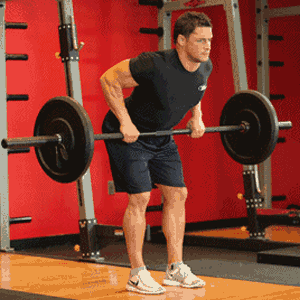 2. Wide-grip Barbell Bent-over Rows
2. Wide-grip Barbell Bent-over Rows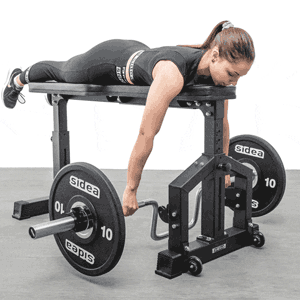 4. Seal Row
4. Seal Row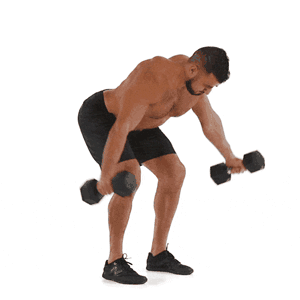 6. Reverse Flys
6. Reverse Flys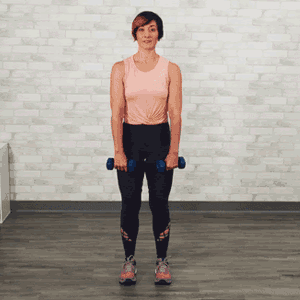 8. I-Y-T
8. I-Y-T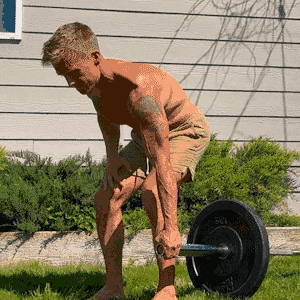 10. Single Arm Landmine Row
10. Single Arm Landmine Row



